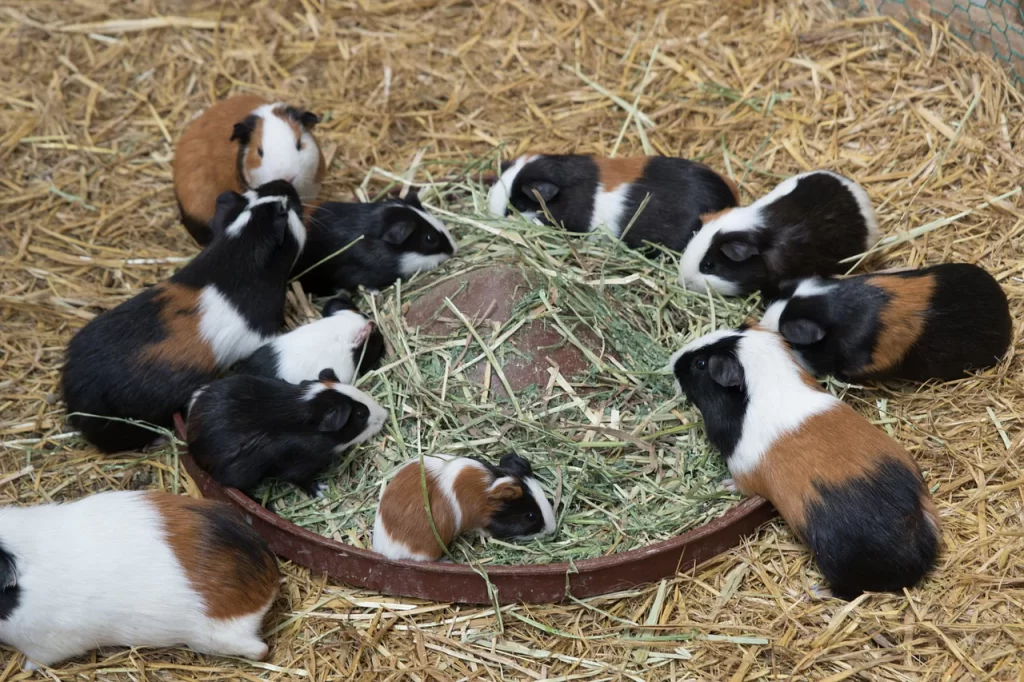Guinea pigs, also known as cavies, are small, social rodents that are popular as pets. They are native to South America, where they are found in the wild in grasslands and forests. In this article, we will discuss the physical characteristics of guinea pigs in detail, including their size, shape, coat, and other features.

Size and Shape
Guinea pigs are small rodents that typically weigh between one and three pounds and measure about 8-10 inches long. They have a compact, rounded body with short legs and a short, stubby tail. Their body shape is similar to that of a potato, with a broad, curved back and a rounded belly.
Coat
One of the most distinctive features of guinea pigs is their coat, which comes in a variety of colors and patterns. Common colors include white, black, brown, and tan, as well as variations of these colors. Some guinea pigs have a solid color coat, while others have a patterned coat with spots, stripes, or other markings. Guinea pig coats can be short or long, soft or wiry, and can have different textures. Long-haired guinea pigs, also known as Peruvian or Silkie guinea pigs, have a coat that grows up to several inches long and requires daily grooming to prevent matting. Short-haired guinea pigs, also known as American or Abyssinian guinea pigs, have a smooth, shiny coat that does not require as much grooming.
Ears and Eyes
Guinea pigs have large, expressive eyes that are located on the sides of their head. They have good peripheral vision, which helps them detect potential predators or other threats. Their ears are small and rounded, and are located on the top of their head. Guinea pigs use their ears to communicate with each other, and can move them independently to show different emotions or reactions.

Teeth
Guinea pigs have four incisors in the front of their mouth that are used for biting and cutting, as well as molars in the back of their mouth that are used for grinding. Guinea pigs’ teeth grow continuously throughout their lives, so they need to chew on hard objects to keep their teeth from becoming overgrown. This is why it is important to provide guinea pigs with plenty of hay and other chew toys.
Feet and Claws
Guinea pigs have four toes on each front foot and three toes on each back foot. Each toe has a small claw that is used for gripping and walking. Guinea pig claws grow continuously, and can become overgrown if they are not trimmed regularly. It is important to have your guinea pig’s claws trimmed by a veterinarian or experienced pet groomer to prevent injury or discomfort.

In conclusion, guinea pigs are small, social rodents with a variety of physical characteristics. They have a compact, rounded body, and come in a variety of colors and patterns. Their coat can be short or long, and requires regular grooming to prevent matting. Guinea pigs have expressive eyes and ears, and use their teeth and claws for biting, chewing, and gripping. With proper care and attention, guinea pigs can make wonderful and engaging pets.